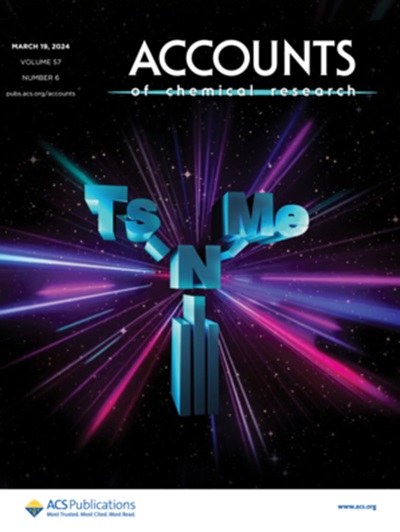In Silico Study of Aptamer Specificity for Detection of Insulin as Development for Diabetes Mellitus Diagnosis
IF 16.4
1区 化学
Q1 CHEMISTRY, MULTIDISCIPLINARY
引用次数: 0
Abstract
Diabetes mellitus (DM) is a metabolic disorder characterized by elevated blood glucose levels. There are 2 types of DM where molecular-level diagnosis becomes very important because both have different treatments to avoid treatment errors. An electrochemical aptasensor as a type 2 DM detector with insulin target has been developed. This study aims to determine the interaction and specificity based on the values of RMSD, RMSF, and binding energy between aptamer and insulin when it reaches stability in silico compared to HbA1c and glucose. Docking simulations were performed on the HDOCK webserver and dynamics simulations for 1000 ns on the aptamer and protein molecular models used. The simulation results were analyzed to see the stability and visualized using VMD to see the conformation of the aptamer-ligand complex. The docking result showed higher binding energy between aptamer-insulin compared to other molecules, namely −221.87 kcal/mol. The results of RMSF and RMSD analysis of molecular dynamics simulations show that the system is stable, has the best binding energy value of −9.9510 kcal/mol. The aptamer complex with insulin showed better specificity compared to glucose and HbA1c based on RMSD, RMSF, and binding energy.检测胰岛素的质谱特异性研究,为糖尿病诊断提供新思路
糖尿病(DM)是一种以血糖水平升高为特征的代谢性疾病。有两种类型的糖尿病,分子水平的诊断变得非常重要,因为这两种类型的糖尿病有不同的治疗方法,以避免治疗错误。目前已开发出一种电化学适配传感器,作为具有胰岛素靶标的 2 型 DM 检测器。本研究的目的是根据 RMSD、RMSF 和结合能的值,确定与 HbA1c 和葡萄糖相比,适配体与胰岛素之间在硅学中达到稳定时的相互作用和特异性。在 HDOCK 网络服务器上进行了对接模拟,并对所用的适配体和蛋白质分子模型进行了 1000 ns 的动力学模拟。对模拟结果进行了分析,以了解其稳定性,并使用 VMD 可视化技术来观察适配体-配体复合物的构象。对接结果表明,与其他分子相比,胰岛素与 aptamer 之间的结合能更高,为 -221.87 kcal/mol。分子动力学模拟的 RMSF 和 RMSD 分析结果表明,该体系是稳定的,其最佳结合能值为 -9.9510 kcal/mol。根据 RMSD、RMSF 和结合能,与葡萄糖和 HbA1c 相比,胰岛素的适配体复合物显示出更好的特异性。
本文章由计算机程序翻译,如有差异,请以英文原文为准。
求助全文
约1分钟内获得全文
求助全文
来源期刊

Accounts of Chemical Research
化学-化学综合
CiteScore
31.40
自引率
1.10%
发文量
312
审稿时长
2 months
期刊介绍:
Accounts of Chemical Research presents short, concise and critical articles offering easy-to-read overviews of basic research and applications in all areas of chemistry and biochemistry. These short reviews focus on research from the author’s own laboratory and are designed to teach the reader about a research project. In addition, Accounts of Chemical Research publishes commentaries that give an informed opinion on a current research problem. Special Issues online are devoted to a single topic of unusual activity and significance.
Accounts of Chemical Research replaces the traditional article abstract with an article "Conspectus." These entries synopsize the research affording the reader a closer look at the content and significance of an article. Through this provision of a more detailed description of the article contents, the Conspectus enhances the article's discoverability by search engines and the exposure for the research.
 求助内容:
求助内容: 应助结果提醒方式:
应助结果提醒方式:


